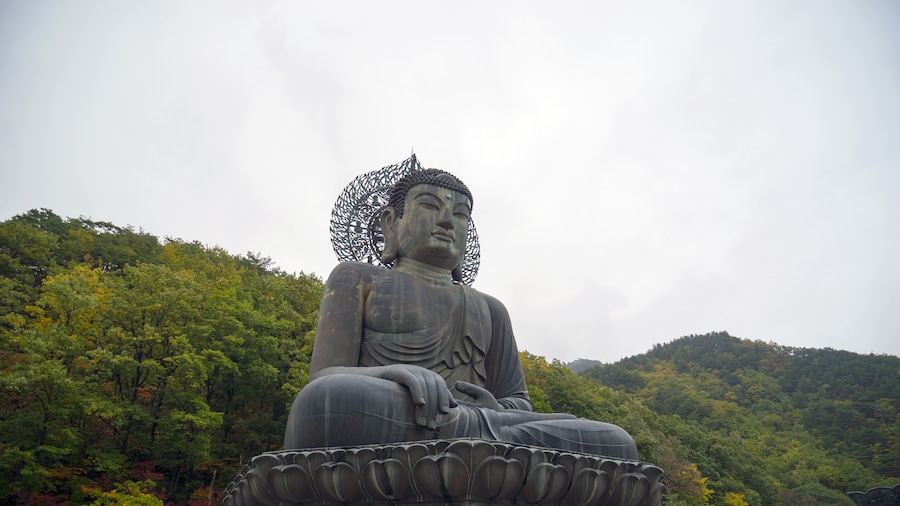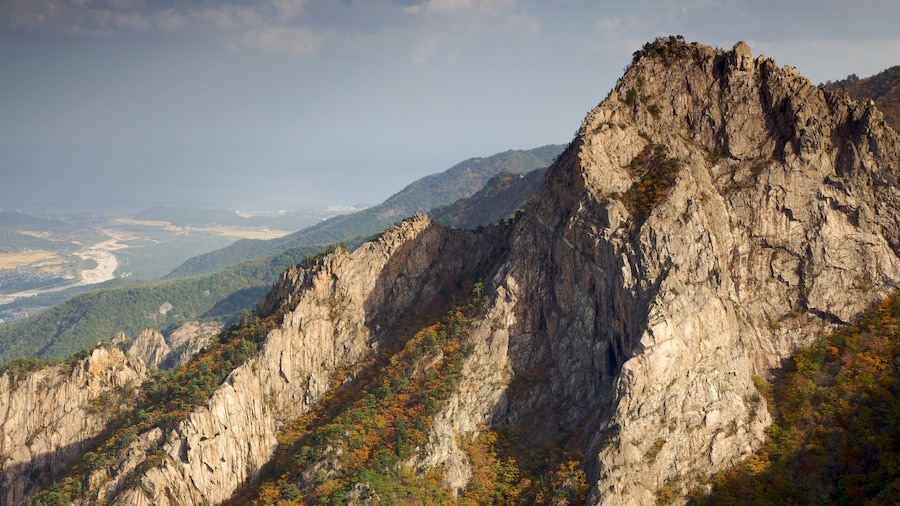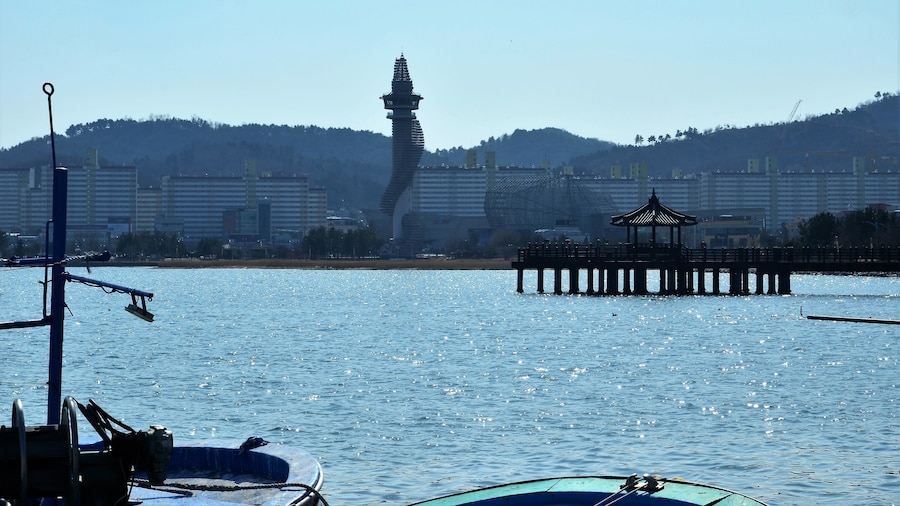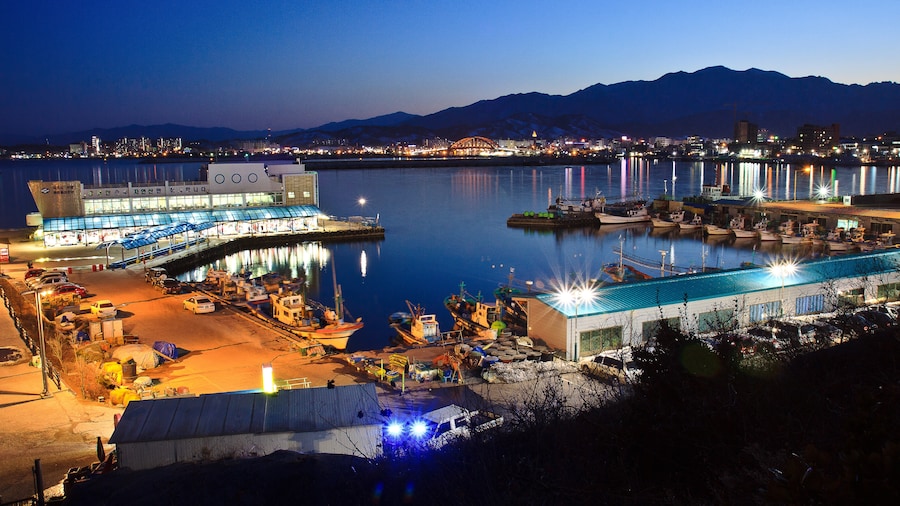Amid the majestic mountains of Seoraksan National Park sits an ancient Zen Buddhist temple and a monument to a peaceful unification for Korea.
First-time hikers on their way up the mild slope at the beginning of the Ulsanbawi course of Seoraksan National Park may be surprised to see an ancient temple along the trail. Sinheungsa is not as old as the mountains themselves, but it has been in place for many generations. The temple is Buddhist, specifically Seon or Korean Zen.
It is one of many temples built by Korean monk, Jajang, in the 600s. Since being destroyed by fire and rebuilt in the 1600s, Sinheungsa has continued as a place of worship and a famous sight to see on Korea’s eastern coast. The temple stores numerous works of Buddhist art—paintings, sculptures, and tapestries.
The temple is not only for local monks it is also available for multi-day paid Mountain Temple Stays by visitors looking to experience Zen meditation and asceticism. The awe-inspiring natural surroundings, along with the monks’ practices of monastic meals, tea ceremonies, chanting, and bowing, bring tranquility to those seeking peace and harmony. Designed for foreigners, the experience includes interpretation in English, Japanese, and Chinese.
For more than ten years, visitors to the temple made contributions toward the building of a statue of Buddha to encourage unification of North and South Korea. The sitting bronze Buddha rests atop a pedestal so that its total height is 62 feet (18.9 meters). It is an impressive symbol towering above hikers below. Known as Tongildaebul, the Great Unification Buddha is less than 30 miles (50 kilometers) from the impenetrable border between North and South Korea.
The main entrance to Seoraksan National Park is just 15 minutes from Sokcho by bus or taxi. Once inside, follow the signs to Sinheungsa Temple or Tongildaebul Buddha, a ten-minute walk. There is an admission fee to enter the park, but no additional fee to view the temple or Buddha, which are open year-round during daytime hours.

















